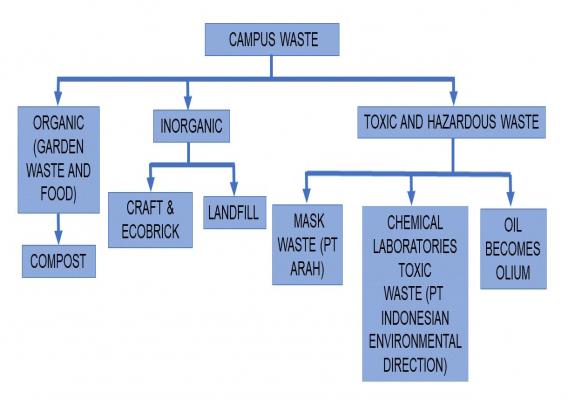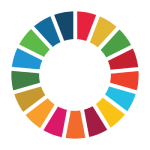UNY Waste Management

UNY campus waste in the form of organic, non-organic, and toxic, and hazardous waste. UNY processes organic waste in the form of leaves, twigs, and food waste to make compost. At the same time, UNY makes crafts and eco-bricks from inorganic waste. Other inorganic waste will go into landfills. Types of B3 UNY waste are disposable mask waste, oil waste from workshops, and toxic waste from chemical laboratories. UNY cooperates with PT Arah Environmental Indonesia (licensed toxic and hazardous waste management company) to process garbage masks.
Toxic waste generated at UNY comes from student practices both in the laboratory and in workshops. Toxic waste management originating from the laboratory, such as acid, wet, and organic waste, is collected into a collector's tank and labeled. In addition to that, toxic waste from this laboratory went into a holding tank. If the tank and the reservoir are full, they will sort to a third party, namely PT. Arah Environmental Indonesia. UNY has collaborated with PT. Arah Environmental Indonesia since July 2021. The form of cooperation is regarding the handling of B3 at UNY.
For waste originating from workshops in the form of oil, UNY manages the toxic used oil waste by storing it in a holding tank before processing. To ensure this waste does not damage the environment, we kept the used oil in special tanks. It is from this tank that the used oil will reprocess into oilum. Oil is an alternative fuel (BBA) with more than 10,000 kcal/kg heat energy. Smart burner with oil fuel used to melt metal waste from the UNY workshop. (Waryati, Alina)






